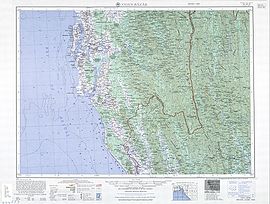The modern Cox's Bazar derives its name from Captain Hiram Cox (died 1799), an officer of the British East India Company. Cox was appointed Superintendent of Palongkee outpost after Warren Hastings became Governor of Bengal. Captain Cox was specially mobilised to deal with a century-long conflict between Arakan refugees and local Rakhains. He embarked upon the task of rehabilitating refugees in the area and made significant progress. Captain Cox died in 1799 before he could finish his work. To commemorate his role in rehabilitation work, a market was established and named Cox's Bazar ("Cox's Market") after him.
Today, Cox's Bazar is one of the most-visited tourist destinations in Bangladesh, though it is not a major international tourist destination, and has no international hotel chains. In 2013, the Bangladesh Government formed the Tourist Police unit to better protect local and foreign tourists, as well as to look after the nature and wildlife in the tourist spots of Cox's Bazar.
Town
Cox's Bazar (Town), Cox's Bazar municipality, was constituted in 1869, eventually becoming a B-grade municipality in 1989. The municipality covers an area of 6.85 km2. Located along the Bay of Bengal in South Eastern Bangladesh, Cox's Bazar Town is a large port and health resort. But it is famous mostly for its long natural sandy beach. The municipality covers an area of 6.85 km² with 27 mahallas and 9 wards and has a population of 51,918. Cox's Bazar is connected by road and air with Chittagong.History
The greater Chittagong area, including Cox's Bazar, was under the rule of Arakan kings from the early 9th century until its conquest by the Mughals in 1666 AD. When the Mughal Prince Shah Shuja was passing through the hilly terrain of the present-day Cox's Bazar on his way to Arakan, he was attracted to its scenic and captivating beauty. He commanded his forces to camp there. His retinue of one thousand palanquins stopped there for some time. A place named Dulahazara, meaning "one thousand palanquins," still exists in the area. After the Mughals, the place came under the control of the Tipras and the Arakanese, followed by the Portuguese and then the British.The name Cox's Bazar/Bazaar originated from the name of a British East India Company officer, Captain Hiram Cox, who was appointed as the Superintendent of Palonki (today's Cox's Bazar) outpost. He succeeded Warren Hastings, who became the Governor of Bengal following the British East India Company Act in 1773. Cox was mobilised to deal with a century-long conflict between Arakan refugees and local Rakhine people at Palonki. The Captain had rehabilitated many refugees in the area, but had died (in 1799) before he could finish his work. To commemorate that, a market was established and named after him, called Cox's Bazar (market of Cox). Cox's Bazar then was first established in 1854 and became a municipality in 1869.
After the Sepoy Mutiny (Indian Rebellion of 1857) in 1857, the British East India Company was highly criticised and questioned on humanitarian grounds, specially for its opium trade monopoly over the Indian Sub-Continent. However, after its dissolution on 1 January 1874, all of the company's assets including its Armed Forces were acquired by the British Crown. After this historic take over, Cox's Bazar was declared a district of the Bengal Province under the British Crown.

Cox's Bazar Map from Series U542, U.S. Army Map Service, 1955
In 1961 the erstwhile Geological Survey of Pakistan initiated investigation of radioactive minerals like monazite around the Cox's Bazar sea-beach area.

Cox's Bazar Bus Terminal
 After the independence of Bangladesh, Cox's Bazar started to get
administrative attention. In 1972 the town committee of Cox's Bazar was
turned into a municipality. In 1975, The Government of Bangladesh
established a pilot plant at Kalatali.
Later, in 1984 Cox's Bazar subdivision was promoted to a district, and
five years later (in 1989) the Cox's Bazar municipality was elevated to
B-grade.
In 1994 (jobs) the Marine Fisheries and Technology Station (MFTS) was
established at Cox's Bazar. MFTS is a research station of Bangladesh
Fisheries Research Institute (BFRI) headquartered in Mymensingh. The station covers a land area of four hectares and contains five laboratories.
In April 2007 Bangladesh got connected to the submarine cable network
as a member of the SEA-ME-WE-4 Consortium, as Cox's Bazar was selected
as the landing station of the submarine cable. In September 2012 the municipality was the site of the Cox's Bazar and Ramu riots, where local Muslims attacked the Buddhist community over an alleged Quran desecration posted to Facebook.
After the independence of Bangladesh, Cox's Bazar started to get
administrative attention. In 1972 the town committee of Cox's Bazar was
turned into a municipality. In 1975, The Government of Bangladesh
established a pilot plant at Kalatali.
Later, in 1984 Cox's Bazar subdivision was promoted to a district, and
five years later (in 1989) the Cox's Bazar municipality was elevated to
B-grade.
In 1994 (jobs) the Marine Fisheries and Technology Station (MFTS) was
established at Cox's Bazar. MFTS is a research station of Bangladesh
Fisheries Research Institute (BFRI) headquartered in Mymensingh. The station covers a land area of four hectares and contains five laboratories.
In April 2007 Bangladesh got connected to the submarine cable network
as a member of the SEA-ME-WE-4 Consortium, as Cox's Bazar was selected
as the landing station of the submarine cable. In September 2012 the municipality was the site of the Cox's Bazar and Ramu riots, where local Muslims attacked the Buddhist community over an alleged Quran desecration posted to Facebook.

No comments:
Post a Comment